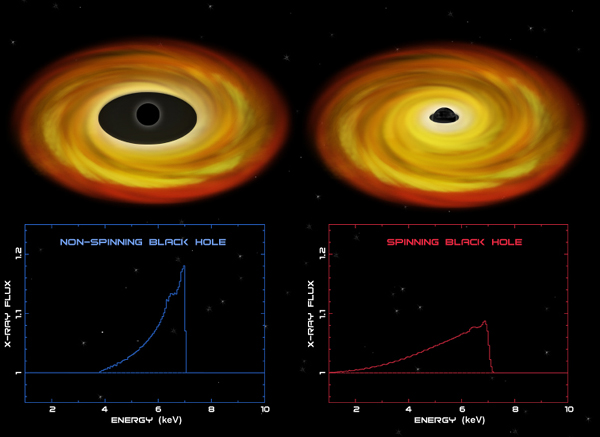
 |
 |
|
||||
|
Cygnus X-1, XTE J1650-500 & GX 339-4: Three stellar black holes in the Milky Way Galaxy. Caption: Spectral observations by Chandra of Cygnus X-1, and GX 339-4, and XMM-Newton of XTE J1650-500 allowed astronomers to study iron atoms as they orbited close to the black holes. The orbits of these particles reveal details of the curvature of space around the black hole, and how fast the black hole is spinning. As shown in the illustration, the gravity of a black hole shifts X-rays from iron atoms to lower energies, producing a strongly skewed X-ray signal. The data do not require that Cygnus X-1 is spinning, whereas the other two black holes are spinning rapidly. One possible explanation for the differences in spin among stellar black holes is that they are born spinning at different rates. Another is that the gas flowing into the black hole spins it up. |
|
|